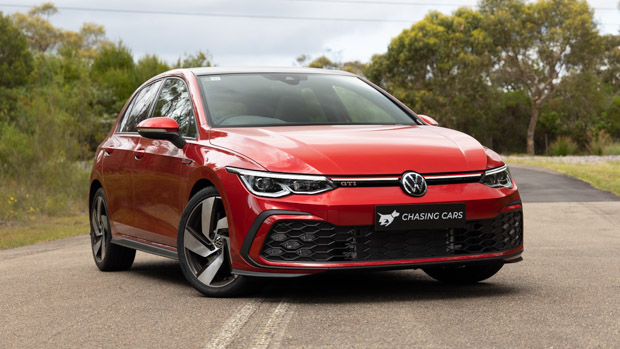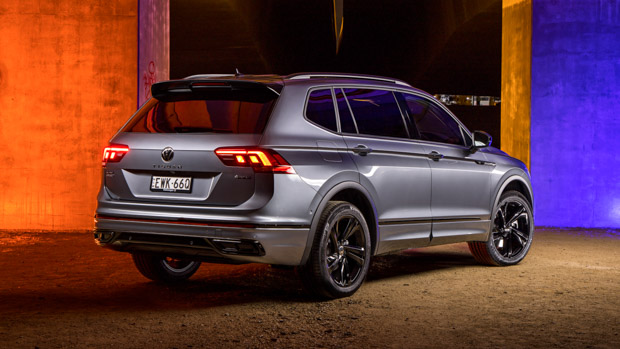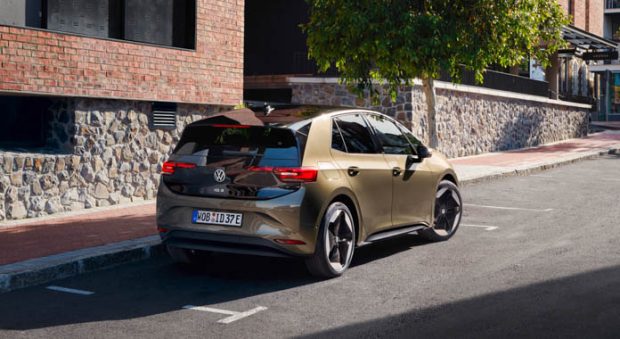-
Car Reviews
- All reviews
- Midsize SUVs
- Small cars
- Utes
- Small SUVs
- Large SUVs
- Large cars
- Sports SUVs
- Sports cars
- Vans
Latest reviews
- Car News
-
Car Comparisons
Latest comparisons
- Chasing Deals
Iconic hatchback nameplates set to be retained in future as Volkswagen diversifies EV strategy away from emerging ID model range
The global head of Volkswagen has announced his intention to convert a number of the VW Group’s ‘icon’ models to fully-electric vehicles in future – and the list includes the familiar Golf small car and Golf GTI hot hatch.
In an answer given during a Q&A session at this evening’s Volkswagen Group annual media conference, chief executive officer Oliver Blume said that while the brand’s ‘ID’ electric vehicle line has had a “very successful” start in the market, the Group would not cast aside its icon models.
“It has been the major advantage of the Volkswagen Group to have a great product portfolio and brand heritage, which sets it apart from many of those new automotive brands that are joining the market as well,” Blume said.
“My expectation is that our icons – let’s take the Golf, or the GTI brand, or the Tiguan, the Audi Quattro, the [Porsche] 911 … [they are our] outstanding iconic products, and I believe they can be transformed.
“For the 911, the example is that we are going to offer hybrid powertrains in order to move towards e-mobility. But if you take the Golf or Tiguan, I can see a huge opportunity to turn [such a] product into an electric variant.”
The remarks consolidate comments that VW boss Blume has made in a series of private interviews in recent months that reveal a plan to diversify Volkswagen’s electric vehicle model plans away from solely the ID family.
While Volkswagen’s ID models will continue to roll out this year – Blume also confirmed this evening that the ID7 electric sedan will be revealed before the end of 2023 – the indication that the Golf, Golf GTI and Tiguan are likely to get electric variants reflects thinking that could come into play in the second half of the 2020s.
Australian buyers will get access to fully-electric Volkswagens in early 2024 in the form of the ID4 midsize SUV and ID5 coupe-SUV, and the recently-facelifted ID3 hatchback later next year.
One complication is that the ID3 is very similar in size to the Golf, while the ID4 is an electric analogue to the Tiguan, which will be revealed in third-generation form this year.
It is one possibility that the ID3, ID4 and ID5 models will have slightly shorter than usual lifespans within the Volkswagen Group, and that their successors will revert to being named Golf and Tiguan as full EVs sometime after 2025.
Such timing would line up with Volkswagen’s planned release of a unified, Group-wide Scalable Systems Platform (SSP) architecture that will underpin nearly all electric products produced by Volkswagen and its sibling brands.
SSP is still scheduled to hit the market under a number of Volkswagen products around 2028, at which time the ID3, ID4 and ID5’s MEB platform will begin to scale down.
Other sources report that the Golf EV project is being attended to internally by a working group previously assigned to the Volkswagen ID2 product, which was expected to utilise lower-cost underpinnings from the Polo-sized Cupra Urban Rebel.
If so, the electric Golf could appear sooner than 2028, and potentially sit alongside the ID3 in the market.
Latest news
About Chasing cars
Chasing Cars reviews are 100% independent.
Because we are powered by Budget Direct Insurance, we don’t receive advertising or sales revenue from car manufacturers.
We’re truly independent – giving you Australia’s best car reviews.


